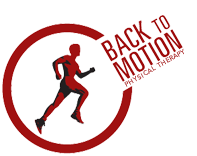Yes, physical therapy helps patients with vertigo. The exercises and techniques a patient are encouraged to participate in are referred to as “vestibular rehabilitation therapy”. This is a custom training program that aids in improving balance by engaging in the act of retraining the brain and the vestibular system. If you would like to learn more about how patients with vertigo are assisted by physical therapists, continue reading.

What is Vertigo?
Vertigo is a type of sensation that the environment you are in is spinning in circles. It is a symptom among numerous health issues, but not considered to be a disease in and of itself. It is possible for vertigo to occur with other types of symptoms in various types of illnesses, diseases, and underlying health conditions.
What Causes Vertigo?
The cause of vertigo may vary from one person to another. In most instances, vertigo may develop as a result of the following medical conditions:
- Migraines
- Consuming certain types of medications. These include but are not limited to antibiotics. Cardiovascular medications, and/or anti-inflammatory medications.
- Heart arrhythmia
- Acoustic Neuroma
- Diabetes
- An injury to the head
- Shingles in or within close proximity to the ear
- Multiple Sclerosis
- Syphilis
- Diseases of the brain
- Low blood pressure
- Prolonged bed rest
- Ear surgery
- Ataxia
- Fluid leaking into the middle ear
- Hyperventilation
What are the Complications That Could be Experienced with Vertigo?
If you have vertigo, there are many complications that may arise. The first and most obvious is the possibility of falling. This could cause fractures and other types of injuries. It can also disrupt your quality of life. You may find that your ability to drive or to work may be hindered. This is why it is important to find and work with a physical therapist that specializes in vertigo programs.
How is Vertigo Diagnosed?
A vertigo diagnosis can only be reached after a comprehensive examination, which will include the following:
- Medical History – The diagnosing physician will consider the onset of the symptoms and how long those symptoms have been experienced.
- The physician will determine if there are any associated symptoms such as a headache, nausea, and/or vomiting.
- The patient will be asked if they have taken any medications and what medical conditions that they have.
- A neurological examination may be done to make an assessment of the coordination, the balance, and the movements of the eyes.
- Many individuals that have vertigo will need to undergo a hearing test.
- The patient may have to have a Dix-Hallpike maneuver test performed that will help to determine if they have benign paroxysmal positional vertigo.
- A head impulse test may be done to determine the overall functionality of the balance system that is located within the balance system of the ear.
- Imaging studies that may include either an MRI or CT scan or both may be done to rule out any type of underlying brain disorder or disorder involving the spinal cord.
- Blood tests may be a part of the diagnostic testing as it will check for certain types of underlying medical conditions that could be causing the vertigo.
- An electronystagmography (ENG) will be used to measure the movements of the eyes and to provide an assessment of the vestibular functioning.
Based on the evaluation that your provider initiates, they will be able to not only diagnose the vertigo but may even be able to tell you what is causing the issue. From there, a treatment plan customized for you will be created.
What are the Two Main Types of Vertigo?
Generally speaking, there are two main types of vertigo. The following outlines these types and includes basic information about both:
- Peripheral Vertigo – This is the most common among patients. It occurs as a result of an issue with the vestibular nerve or the inner ear. Both of these have a direct impact on one’s sense of balance. This type of vertigo has several different subtypes. These are as follows:
- Benign Paroxysmal Positional Vertigo (BPPV)
- Labyrinthitis
- Meniere’s Disease
- Vestibular Neuritis
- Central Vertigo – This is a less common type of vertigo among patients. It develops when there is some type of issue that directly impacts the brain. Examples of these issues includes – but are not limited to – stroke, infection, and a traumatic injury. In addition to experiencing the spinning symptom, one may have additional problems such as problems walking and instability.
How Does a Physical Therapist Help in Caring for Patients with Vertigo?
There are many steps that may be made by a medical specialist to assist patients with vertigo. The following outlines some of these measures:
- Vertigo Medication – Many healthcare providers will help patients by providing certain medications that will stop the symptoms being experienced. This is most often the treatment for vertigo that suddenly develops. The most commonly prescribed medications include meclizine, dimenhydrinate, and/or an antihistamine like cyclizine.
- Repositioning Maneuvers – If a patient has BPPV, it indicates that the small crystals composed of carbonate – which are also referred to as “canaliths” – have moved from the utricle located in the inner ear to the nearby semicircular canals. When this happens, when the head is repositioned, the vertigo occurs. This type of therapy helps to move the crystals out of the canals and back into the utricle. This involves specific types of movements for the head. The medical professional helping a patient with these movements will teach them how to do them at home so that the treatment may continue.
- Vertigo Exercises – If a patient has vertigo and enlists the assistance of a physical therapist, they will go through with an interview and the therapist will then create a customized care plan that includes vertigo exercises. This type of therapy is referred to as “vestibular rehabilitation therapy”. The movements performed are intended to improve symptoms like dizziness, balance problems, and vision that is unstable. The exercises that are to be completed will be based on the individual needs of the patient. Examples include stretching, marching in one spot, eye movement control, and even strengthening exercises. In many instances, the patient will be instructed to perform these exercises when they experience a vertigo episode.
- Surgery – Having surgery is actually considered to be a rare treatment for vertigo; however, it is possible that it will be recommended. This mostly occurs with patients that have an underlying medical issue. This is only recommended when other types of treatment are proven to be ineffective.
How Physical Therapists Help Patients Get Rid of Vertigo
When you work with a physical therapist, there are many techniques that may be used in order to assist in eliminating the symptoms of vertigo. One of the most popular is outlined below:
- When standing up, you will be encouraged to move slowly and turn your head.
- The patient will be instructed to keep your head elevated with – at least two pillows
- When lying down, the patient will be told to make sure the room is dark and it is quiet because this will help in stopping the movement sensation.
- The patient will be taught that if they are standing and they start to feel dizzy, they must sit down.
- If a patient with vertigo has to pick something up from the floor, they should be encouraged to squat down than to completely bend over.
- If the patient must get up during the night, they should be encouraged to turn a light on and not move around in the dark.
- If a patient feels as if they may fall, they should be encouraged and taught how to use a cane, a walker, or a rollator.
Can Vertigo be Completely Cured?
As of this time in history, there is currently no cure for vertigo; however, many individuals have found that once they have it and eliminate it, they never experience the problem again. Then still, there are those who have frequent vertigo episodes. If a patient continues to have reoccurring episodes, they should inform their doctor and/or their physical therapist.
Warning
If a patient suffers from vertigo and has other symptoms – such as chest pain, heart palpitations, severe headache, vision changes, sweats, extreme fatigue, blood in bowel movements or urine and any new skin changes – they should seek medical care immediately. These symptoms could indicate that there is a serious underlying issue.
Contact Us
If you suffer from any type of vertigo, we here at Back to Motion Physical Therapy are capable of assisting you. In fact, we specialize in vestibular therapy for individuals that experience vertigo on a regular basis. In addition to this, we offer dry needling, balance training, the antigravity treadmill and more! If you are interested in our services and/or you suffer from vertigo problems, we enough you to give us a call at the following number. By the way, if you have any other health concerns, be sure to let the specialist know as this will help us create a customized care plan for you: 303-832-5577
